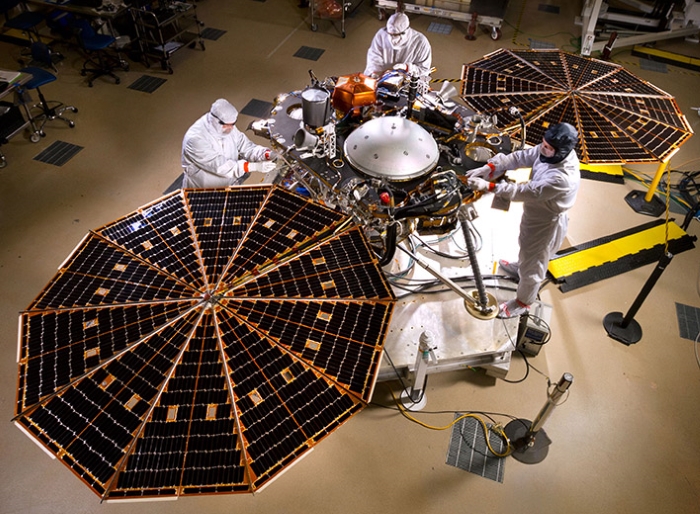Go offline with the Player FM app!
Planetary Hygiene
Manage episode 229729628 series 6834

BOB HIRSHON (host):
Spacecraft hygiene. I’m Bob Hirshon and this is Science Update.
The NASA Office of Planetary Protection is sort of a high-tech janitorial service cleaning and checking spacecraft for bacteria and their tough spores. Betsy Pugel is deputy to the Planetary Protection Officer.
BETSY PUGEL (NASA):
So that when something goes to Mars, or Enceladus, places that may have life, that we know what we’re taking along in terms of a biological load.
HIRSHON:
But she says no matter how carefully they scrub, some spores manage to survive.
PUGEL:
Nature always finds a way. You think you’ve cleaned something to the nth degree and somehow, somewhere there’s something that manages to persist.
HIRSHON:
In fact, the extreme efforts the group takes to disinfect the spacecraft have led to the discovery of new types of super-tough microorganisms that survive their efforts — clues to the very sorts of microbes that might live on other worlds. I’m Bob Hirshon for AAAS, the Science Society.
Story by Bob Hirshon
The post Planetary Hygiene appeared first on Science Update.
668 episodes
Manage episode 229729628 series 6834

BOB HIRSHON (host):
Spacecraft hygiene. I’m Bob Hirshon and this is Science Update.
The NASA Office of Planetary Protection is sort of a high-tech janitorial service cleaning and checking spacecraft for bacteria and their tough spores. Betsy Pugel is deputy to the Planetary Protection Officer.
BETSY PUGEL (NASA):
So that when something goes to Mars, or Enceladus, places that may have life, that we know what we’re taking along in terms of a biological load.
HIRSHON:
But she says no matter how carefully they scrub, some spores manage to survive.
PUGEL:
Nature always finds a way. You think you’ve cleaned something to the nth degree and somehow, somewhere there’s something that manages to persist.
HIRSHON:
In fact, the extreme efforts the group takes to disinfect the spacecraft have led to the discovery of new types of super-tough microorganisms that survive their efforts — clues to the very sorts of microbes that might live on other worlds. I’m Bob Hirshon for AAAS, the Science Society.
Story by Bob Hirshon
The post Planetary Hygiene appeared first on Science Update.
668 episodes
All episodes
×Welcome to Player FM!
Player FM is scanning the web for high-quality podcasts for you to enjoy right now. It's the best podcast app and works on Android, iPhone, and the web. Signup to sync subscriptions across devices.




